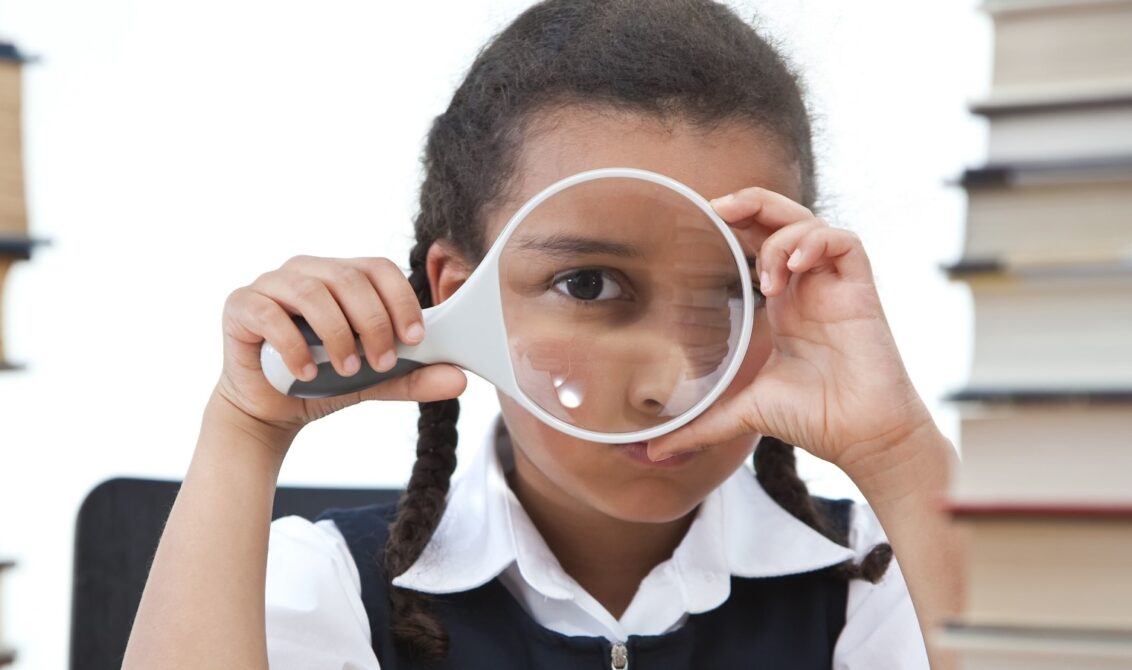
The current news about the global reach of the pandemic is devastating and it’s challenging at times to be optimistic about the next weeks and months. Yet the well-known saying ‘every cloud has a silver lining’ means that for every difficulty or setback, there is the potential for a beneficial outcome. By searching for something positive, we can begin to feel more hopeful.
We can change our outlook on a negative event. We can help children to be a positive tracker and look for the small good things, even in a bad situation. We can usually find something good in any bad situation, if we try. Sometimes the good thing is that it could have been worse. Sometimes the good thing is what you learned from what has happened. Here are some activities you can try with primary-age children to help them look for the silver lining:
Find 3 good things about lockdown
Naming three positive things helps to shift children into a more positive state of mind. For example, during lockdown they have more time to watch a movie, read, spend time with different family members and play games. The key thing is to focus on the everyday small good things in a challenging situation.
WWW: What Went Well: track the small good things in your day
Making a daily habit of naming ‘three good things that happened for you today’ helps to boost positive emotions. It can be any small thing like watching a funny video, enjoying a delicious breakfast, talking with a friend on the phone, playing a board game with another family member or kicking a ball. If a child can’t think of anything, ask them some prompting questions, such as what did you laugh about? What did you enjoy doing today? Getting them into a daily habit of doing this before bedtime can help children sleep well.
Positive tracking journal
Each child can keep a journal where they record one or two positive moments/incidents/activities that occur in their family (or in their class) each day. At the end of the week, they can share these with all family (or class) members.
On-the-spot positive tracking
Whenever possible, use situations that occur in the home or classroom to keep children practising positive tracking (or seeing the ‘silver lining’). For example, if they fell over and scraped their knee, but at least they didn’t break a bone; They can’t visit their friend, but they can talk to each other on the phone.
Positive tracking game
Children play in twos – it’s possible to play via a video call. Each child draws a picture with ten objects. They toss a coin to decide who goes first. Then, without showing their picture to their partner, one person instructs their partner to draw the same picture by giving only positive instructions and feedback as to where the items are located in the picture. They can say, “Draw the trunk of a tree on the right side of the picture. Now add three branches”. They can only give positive feedback like “Good listening”, or “Great, you drew three branches”, etc. They can’t say things like “No, the tree is all wrong”. A twist to the game could be a third person counting the number of positive versus negative comments. Note how difficult it is to keep being positive when people are not following instructions.
Suggested reading for lower primary students
Read Willy and the Cloud by Anthony Browne or watch a reading on YouTube. It begins with Willy taking a walk on a warm sunny day. There’s only a tiny little cloud in the sky. At first it doesn’t bother Willy but as the cloud follows him, it grows bigger and bigger and becomes harder and harder to ignore. The cloud is a metaphor for our worries and the more we focus on what’s worrying us, the harder it is to ignore them. Willy’s mood changes when he confronts the big cloud and realises it’s only made up of little droplets or water and air. He then joins the people in the park, dances with them and feels happy.
At first glance this book looks like a picture book for young children, but its message appeals to everyone. A song with the same message is Sprinkle a Little Sunshine by Suzy Cato and Kath Bee also on YouTube.
Flip-book for middle primary students
Children create an It could be worse! flip-book by drawing and writing one setback on the top half of an A4 page. On the bottom half of the page, they glue a lift-up flap. On the flap, they write ‘BUT it could have been worse!’ Underneath the flap, they draw and write how it could have been much worse – absurd responses make it funnier, but still convey the message about keeping things in perspective. They could share their ideas with friends. Some example of setbacks are:
I fell over and scraped my knee…
But it could have been worse! I could have lost my head!
I had a flat tyre on my bike…
But at least my muscles aren’t flat.
You can also follow up reading It Could Always Be Worse by Margot Zemach which is also available on Youtube.
Quotes for upper primary students
Search for quotes about silver linings or optimism. Choose one and make a painting, collage or poster to share with your family or class.
Family message board – track the good stuff
Our family uses a small blackboard on an easel for writing positive messages from ‘a fairy’. It can be an inspirational quote or proverb ‘There is light at the end of the tunnel’, a message of gratitude, a joke or riddle, or a simple message that young children can read themselves, such as ‘Leo is happy’. Changing the message regularly keeps it interesting. Any family member can be the chalkboard fairy. A small whiteboard attached to the fridge works well too.
Why looking on the bright side of life works
Getting into a habit of identifying the positive aspects of our life and seeing the upsides to challenging situations, rather than fixating on the downsides increases our happiness and wellbeing. With repeated practice, children can learn more naturally to look on the bright side, even when faced with difficulties in their life.
More resources for parents with primary learners at home
View this post as a downloadable PDF (PDF | 198 KB) and see more ideas for parents with primary learners at home:
Boosting positive emotions (PDF | 256 KB) Most of us are living in conditions we would never have imagined a few months ago. In so many ways our lives have dramatically changed, with lockdowns and stay-at-home orders to slow the spread of the coronavirus. What can we do to help ourselves and our children to stay positive and resilient in such challenging times? This PDF contains tips and activities designed to provide parents and teachers with some wellbeing tools for primary school-aged children during this global pandemic.
Being kind, being thankful (PDF | 189 KB) Everyone is challenged by the physical restrictions during the COVID-19 pandemic. Many people naturally feel anxious and isolated. Practising kindness and feeling gratitude for others’ kindness to you not only builds stronger relationships with our family, extended family, friends and neighbours but improves our sense of wellbeing and happiness. Often the giver benefits just as much, or even more than the receiver. This PDF includes suggestions for activities to help children practise kindness.
Staying connected (PDF | 389 KB) We are all social creatures so enforced social distancing during the COVID-19 lockdown is very hard. We need to be creative in how we can help our children continue to socially connect with their friends, peers and extended family, like their grandparents, without physically connecting with them. This PDF includes activities designed to help primary school-aged children to have
fun interacting with a friend or classmate via phone or video with interesting and purposeful conversation.

